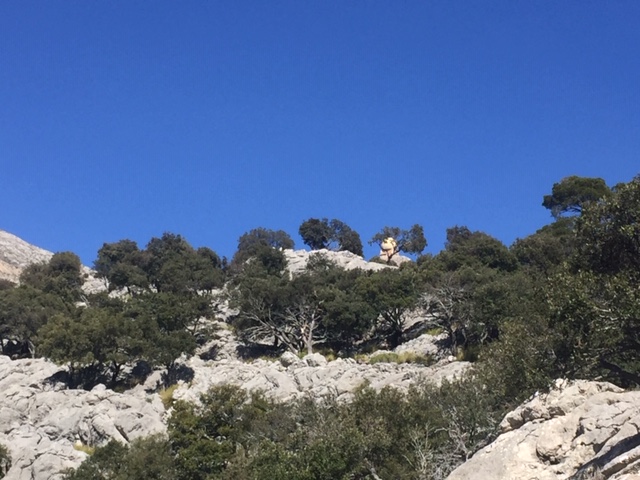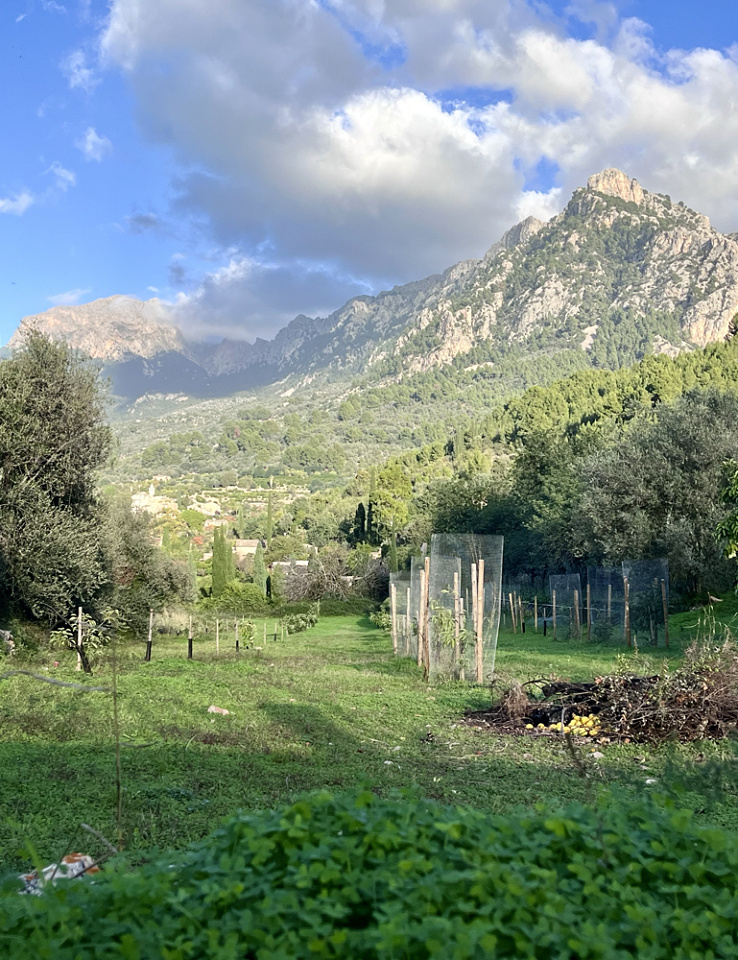From 1959, Mallorca was in the middle of the Cold War with the construction of an American base on the highest peak of the Sierra de Tramuntana.
Antoni Janer Torrens ARA Balears
In the Balearic Islands, the scars of the Cold War are still clearly visible. On September 26, 1953, the Madrid Pacts were signed. After founding NATO in 1948, the United States was “rehabilitating” Franco’s fascist regime for a “force majeure cause”: monitoring any “communist threat.” Thus, the Yankees of Eisenhower undertook to help their new partner economically and militarily, of great strategic value. Not without reason, they did so in exchange for being able to build their own military complex in the western part of the Mediterranean. The agreement provided for the creation of four large bases, three air (Zaragoza, Torrejón de Ardoz in Madrid and Morón de la Frontera in Seville) and one naval (Roa in Cadiz). It also provided for the construction of 16 points for stations.
One of those points called “air alert and control” was the Puig Major, the highest mountain in the Islands. Dominating the Balearic Sea, it offered good communication with other American bases in the south of France, the Italian peninsula, Morocco or Libya. The works began in 1956. Ricard Janer, prior of Lluc, remembers them perfectly: “At the end of the summer we had gone up with a group to the Puig Major, where there was a chapel of the Virgin of Lluc. When we go down, we will hear the noise of the excavators ”. The environmental impact was considerable: on a slope 850 meters high, an eight-kilometer road was opened. In 1958, in order to be able to place the telecommunications station there, the summit was blown up, which was cut in nine meters, from the old 1,445, which are still on some maps, to the current 1,436.
The station had two radars, which were activated in July 1959. They were inside two large, half-orange domes, clearly visible from many corners of the island. They would be popularly known as “the bubbles of the Puig Major”. Like all other stations, the Mallorcan had a blue circle-shaped emblem that, in the center, showed a giant hand with a clenched fist that captured a Soviet plane. In Spanish, the slogan said: “They will not pass.”
On December 21, 1959, Franco received President Eisenhower in Madrid. It was the staging of an interested pact with which Spain emerged from its international ostracism. At the airport, some 50,000 people cheered the foreign leader on the runway in the manner of the brilliant satire Bienvenido Mister Marschall (1953), by filmmaker Luis García Berlanga. This time, however, the Americans did not miss it.
Landscape revolution
On May 10, 1960, the “bubbles of the Puig Major” were officially inaugurated by the dictator himself. Ricard Janer also remembers the beginning of the works on the road from La Calobra to Sóller: “The machinery that the Americans had used to finish connecting the Sierra de Tramuntana was used. The engineer Miquel Àngel Llauger was in charge of collecting the testimony of Antoni Parietti, who in 1933 had finished the road to La Calobra. From Lluc we could hear the horn of the trucks coming up from the part of Pollença ”. The works lasted three years and employed about 1,000 people, most of them from Sóller. On July 23, 1961, a 17-kilometer route with two tunnels was inaugurated.
In the early 1970s, the American machinery was also used to build the Gorg Blau and Cúber reservoirs, which were to be used to supply water to a Palma that was already completely sucked in by the effects of the tourist boom . People from many places in Mallorca and even Lorca worked on those works, some of whom ended up living in Sóller. On April 17, 1972, Franco’s Minister of Public Works Fernández de la Mora presided over the inauguration of both marshes.
The low-ranking soldiers from Puig Major lived in the Cúber barracks, but the officers and non-commissioned officers were distributed in the Sóller area, where they rented houses and apartments. In 1963, some of them moved to the Soller military residence in Son Angelats. There were, however, many who preferred to go to Palma, through the neighborhood of Sant Agustí and Cas Català. Joan Oliver is an 80-year-old retired lieutenant colonel. He was assigned to the Puig Major for 25 years, from 1964 to 1989. “There were a hundred Americans working at the military base,” he says. Most lived in Palma. They rented a train, which at six in the morning left Ciutat for Sóller, from where they took a bus that took them to the top of Puig Major. Then, at six o’clock in the afternoon, they took the train back. “
Oliver had to learn English to work on the roof of the Balearic Islands: “The radars were to control all the planes that entered the Spanish security zone. Now they work automatically, but before they were manual. In front of the screen we had to control all the planes that were coming. The signal was sent to the control center of Madrid and there they supervised that all the airplanes had the pertinent permission ”. The former lieutenant colonel says the relationship with the Americans was very cordial. “When I got married in Algaida,” he recalls, “they even left me one of those typical six-meter-long American cars.”
Saviours of the world
The view of the American population of those American soldiers was conditioned by post-war cinema, which presented them as the new saviors of the world. This was reflected in films such as The Way Ahead , The True Glory and Beach Red, played by actors such as Cornel Wilde, Kirk Douglas and Frank Sinatra. However, from Puig Major, many of those heroes lived with concern the tragic events that marked the sixties: the Cuban Missile Crisis, the assassination of Kennedy or the case of Palomares, in which on January 17 In 1966, a B-52 bomber crashed into Almeria with a tanker plane – four thermonuclear bombs fell on Palomares that did not explode, but posed a great radioactive danger, as they were 65 times more destructive than those in Hiroshima.
In 1965, the Americans also wanted to have a telecommunications base in Menorca that would serve as a bridge between the radars of Puig Major and Puig Limbara (Sardinia). The place chosen was the Ferreries Anvil, the second highest peak on the island (275 meters). The base hosted about thirty Americans. From 1973 onwards, with the advent of satellite technology, most of these surveillance sites became obsolete and were gradually ceded to Spain in the wake of Spain’s entry into NATO in 1986. Spanish army.
One of the last American soldiers to work on Puig Major was Peter Owen, 62. He arrived in Mallorca in 1983 at the age of 27. He was there for a year and a half and in 1988, after finishing his military career, he returned to the island as a civilian to work in a company. He married a Soller woman and never left again. “When they told me – they confess – that I was destined for Mallorca, I could barely put it on the map. Here we did a lot of work and had a very good relationship with the Spaniards. At Christmas we used to give presents to the children of Sóller ”.
‘Marines’
In the sixties, the presence of Americans in our country increased with the members of the marines of the Sixth Fleet calling at Palma. Up to fifty ships in a year and one or two aircraft carriers with 5,000 men each came to berth in the bay. Those stocky soldiers, who did not go unnoticed in their striking uniforms, left many dollars during their brief stays. To attract them, there were bars and prostitute clubs in the “Chinatown” district, now converted into the Gerreria, which took the name of some prominent ships and aircraft carriers of the US Navy. This was the case in Kansas , Winston or Kentucky .
Tummy Bestard, the veteran consul of the United States in Mallorca for 45 years, was very attentive to those marines . He was the promoter of the ‘Put a Marine at Your Table’ campaign. “At seventy, for Christmas,” he recalls, “so that those men wouldn’t feel so alone, we put an ad in the newspaper. We asked families who wanted to take a soldier home for those important dates. In the first year, 280 families showed up at the dike in the west of Palma. It was a success. There were some small incidents with Americans getting drunk. However, there were also cases of girls who tried to force them to become intimate with them.
The Marines also stood out for their charitable spirit. They donated blood and at Christmas 1985, in Alaró, a squadron of helicopters loaded tons of construction material that was to be used to renovate the castle’s hermitage, which was so difficult to access. In 1991, with the dissolution of the Soviet Union, the Cold War ended and visits by Yankee soldiers became increasingly scarce. There were almost none left in the Sierra de Tramuntana and in 1993 the Menorcan military base of the Anvil closed its doors for good. In 2005, the Spanish army remodeled the Puig Major, which became one of its characteristic “bubbles”. Today, with restricted access to the public, the island icon of the Cold War is still the target of anti-militarist protests.
The Parietti funicular
The Parietti funicular In 1925, the engineer and cultural promoter from Palma, Antoni Parietti (1899-1979), finished directing the works on the road from Port de Pollença to Formentor and in 1933 on the Calobra road, which became a technical prodigy for the time. Both infrastructures were made with a clear tourist interest. However, Parietti’s big dream, that in the sixties he would be president of Foment de Turisme de Mallorca, was another: to make the Puig Major accessible by means of an aerial funicular. It had to start from Cals Reis, the starting point of the Calobra road, to reach another station at more than 1,400 meters above sea level.
That imposing means of transport was modeled on the Montserrat rack railway in Barcelona. With a cabin for 25 passengers, it had to cover a distance of two kilometers for ten minutes, saving a drop of 715 meters. In addition, the highest elevation of the Sierra de Tramuntana was planned to house an astronomical observatory, snow sports facilities and a restaurant.
The Funicular Aéreo company was in charge of financing the two million pesetas of a project that had the permission of the Ministry of Public Works. The presentation of this “masterpiece of Mallorcan engineering” took place in 1934 at the Teatre Principal amid great popular enthusiasm. The national press also echoed this. In June 1936 work began. A month later, however, with the outbreak of the Civil War, they were interrupted. However, Parietti did not resign and in 1939 tried to restart the project with the German firm Bleichord-Zueg. The outbreak of World War II suspended him again.
In the fifties, the engineer from Palma did not give up on his dream of making the roof of the Balearic Islands accessible to the public. He managed to transform the funicular concession into a toll road to the Puig Major. Once again, the army – this time the 1953 Madrid Pacts between the United States and Spain – halted construction. However, his project was acquired by the state to build the current road leading to the military facilities. Today, of that Parietti curolla, which could have changed the geography of the Sierra de Tramuntana forever, only a dry wall margin remains next to the road that goes down to La Calobra.








